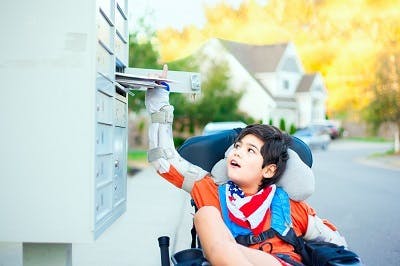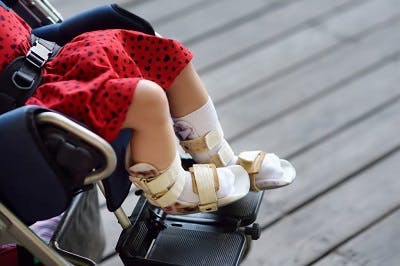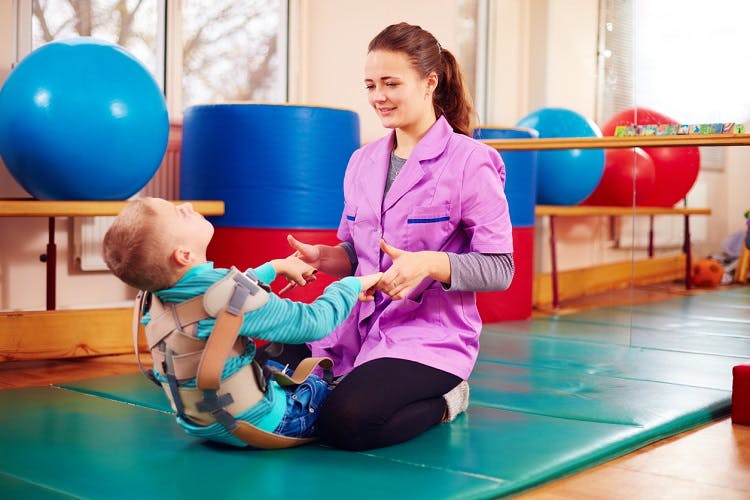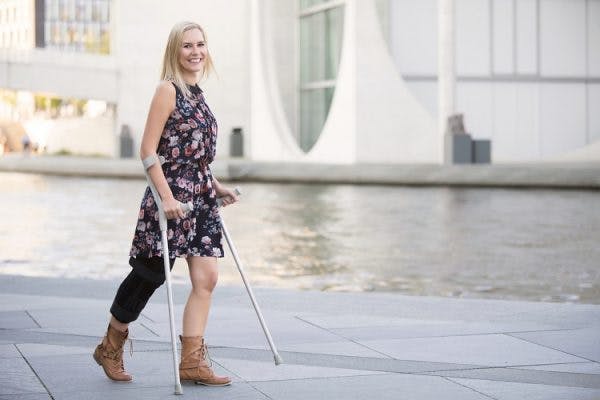Orthotics are wearable medical devices that play an important role in the management of cerebral palsy. Because cerebral palsy generally affects movement starting from a very young age, early use of orthotics can significantly minimize the progression of complications and optimize functional independence.
To help you better understand the use of orthotics in the management of cerebral palsy, this article will discuss:
- Goals of orthotics for cerebral palsy management
- Benefits of orthotics for cerebral palsy
- How long orthotics must be worn
Goals of Orthotics for Cerebral Palsy Management
The primary goal of orthotics in the management of cerebral palsy is to provide structural support.
This is important because cerebral palsy is a developmental motor disorder, which means it can affect an individual’s movements, balance, coordination, muscle tone, and posture.
Because it is caused by damage to the brain before, during, or shortly after birth, the effects of cerebral palsy often affect individuals starting at a very young age. However, those with milder forms of CP may not notice motor impairments until they get older.
The earlier cerebral palsy is identified, the sooner individuals can seek management for it. Early intervention can help significantly reduce the progression of motor impairments and minimize the severity of secondary complications like pain, deformity, and spasticity.
In the following section, we’ll discuss the various benefits of wearing orthotics for managing cerebral palsy.
Benefits of Wearing Orthotics for Cerebral Palsy

Depending on the severity of one’s cerebral palsy and how it affects their functional abilities, a physical therapist, occupational therapist, or physician may recommend different types of orthotic devices such as splints, braces, or casts.
Orthotic devices can be pre-fabricated or custom-made, depending on the needs of the wearer. While “off-the-shelf” style orthotics can be appropriate for cerebral palsy management, individuals with more specialized needs may have a therapist or orthotist recommend a personally designed and created orthotic. Either way, it is best to have a professional review orthotic donning (putting on) and doffing (taking off) techniques, proper fit, wearing schedule, and care with you.
The earlier orthotic treatment begins, the easier it is to manage cerebral palsy and its complications.
Below, we’ll discuss how orthotic devices can help individuals with cerebral palsy become as functional as possible:
1) Manages Spasticity
One of the most prevalent secondary effects of cerebral palsy is spasticity. Spasticity refers to high muscle tone caused by involuntary muscle contractions. It can place excess pressure on the muscles and joints, causing stiff movements, sudden jerking, joint dislocation, and pain.
Wearing an orthotic device on the affected area(s) of the body can help significantly reduce the impact of spasticity. Orthotics help hold the body part in place to prevent unwanted movements and minimize spastic muscles from further tightening.
Additionally, orthotics will help gently stretch tight muscles, even when the individual is not actively moving. This allows for passive lengthening of spastic muscles, which also helps minimize the progression of spasticity.
2) Corrects Posture
Individuals with cerebral palsy can experience high or low muscle tone, or a combination of both. When someone has low muscle tone in their abdominal muscles, they often have poor trunk stability and balance skills, which compromise posture. Likewise, high muscle tone can pull the body into abnormal postures.
To help combat these complications, a physical therapist or physician may recommend wearing a trunk brace. It should provide the stability and structural support necessary to help individuals sit upright.
3) Decreases Pain
Spasticity strains the musculoskeletal system, which may contribute to the development of chronic pain. Consistent musculoskeletal pain can disrupt sleep, affect mood, and hinder growth in children with cerebral palsy.
Orthotics help correct musculoskeletal alignment to relieve pain caused by excess pressure on the muscles, bones, and joints.
4) Minimizes Deformity
Because cerebral palsy-related motor impairments generally present themselves in early childhood, they can significantly interfere with an individual’s growth and development.
Children are constantly growing, and high muscle tone can pull the body into abnormal positions. When the muscles remain contracted for prolonged periods while children are growing, deformities may develop. Orthotics help correct these abnormal positions before they become problematic.
5) Custom-Made
While not all orthotics are custom-made, those prescribed by a medical professional usually are. Every body is different, so ensuring that your child’s orthotics are a good fit helps ensure the maximum amount of support and effectiveness.
6) Improves Functional Abilities
Because individuals with cerebral palsy struggle with motor control, posture, and balance, their bodies generally have to exert more energy to perform movements.
Orthotics help stabilize and support correct musculoskeletal alignment to promote better form and minimize excess strain on the body. This helps conserve energy and discourages irregular movement patterns.
7) Low Risk
Another major benefit of using orthotics in the management of cerebral palsy is that they are generally very low risk. Orthotics are wearables, which means if they cause the wearer distress, they can be taken off at any time.
Additionally, orthotics are an excellent, non-invasive, and relatively affordable way to delay or avoid the need for surgery.
Now that you understand how orthotics can be beneficial for individuals with cerebral palsy, let’s discuss how long orthotics should be worn.
How Long Should Individuals with Cerebral Palsy Wear Orthotics?

How long your child will need to use orthotics depends on the severity of their cerebral palsy. Because every case of cerebral palsy is unique, a personalized approach to rehabilitation is ideal.
Some individuals may only need to wear their orthotics for a few minutes a day while others may need to wear them throughout the day or during sleep. Speak to your child’s doctor or therapist to determine the recommended amount of time they should be wearing their orthosis each day.
It’s also important to avoid becoming overly dependent on orthotics and understand how to wean your child off them. If your child relies too heavily on orthotics, they will not learn how to engage their muscles without them.
Neuroplasticity is the brain’s ability to rewire itself, which allows for functions affected by brain damage to be reorganized to healthy areas of the brain. By utilizing neuroplasticity, individuals with cerebral palsy can train their brains to make adaptive changes and improve their motor functions.
The most effective way to promote neuroplasticity is to repetitively practice the functions you want to improve. This stimulates the brain and reinforces demand for those functions.
Orthotics help correct form and combat spasticity to promote more natural movements. Once your child gets accustomed to practicing the corrected movement pattern, speak with their therapist or doctor about whether it’s appropriate to start gradually reducing the amount of time the orthotic device is worn and begin training without it.
The more your child practices a specific movement, the stronger the new neural connections for it become until eventually, your child may no longer require orthotics.
Orthotics for Cerebral Palsy: Key Points
Many individuals with cerebral palsy use orthotics to manage their motor impairments.
However, orthotics should be used as a temporary aid. Once your child starts demonstrating more natural movement patterns, try weaning them off orthotics to encourage active muscle engagement.
It isn’t easy, but with consistent practice, your child can train his/her brain to rewire itself and improve motor functions.
We hope this article helped you understand the benefits of orthotics for CP management and how to utilize them to optimize long-term outcomes.











